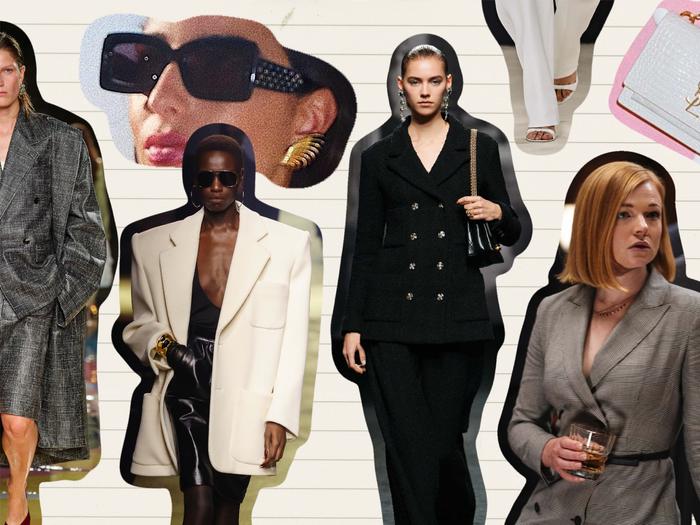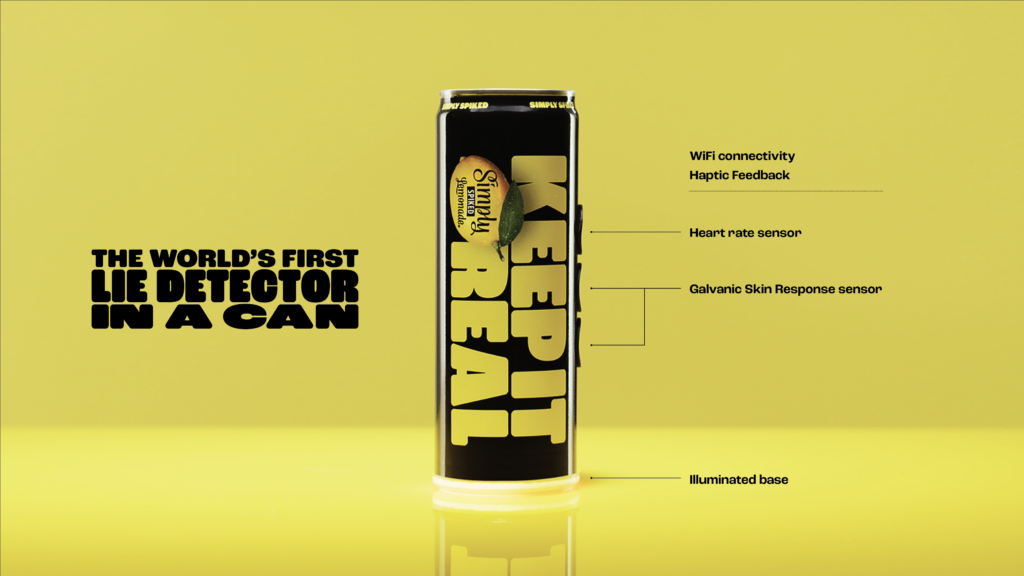Citizen Rundown: Vol. 4
September 11, 2023

Welcome to the fourth edition of The Rundown by Citizen, a monthly round up of conversations that count. We’re offering bite-sized big thinking on recent headlines from around the world to help keep you in touch for your next water cooler, virtual boardroom or dinner party chat.
Tapping Into The Untapped

To say this year’s FIFA Women’s World Cup sparked a lot of conversations would be an understatement. As with any sports tournament, controversies and upsets in the game dominated the news cycle. But one thing was clear – brands were finally recognizing the Women’s World Cup’s potential. And with good reason; research has shown that 45% of U.S. soccer fans were more interested in women’s soccer than they were a year ago.
Brands such as Visa, Volkswagen, Roblox and Adobe have all partnered with the U.S. Women’s Soccer team in various capacities to show their support of the tournament. Frito-Lay, the ‘Official USA Snack’ of the Women’s World Cup, even created a TV spot highlighting the passion die-hard soccer fans have – with a mom using Frito-Lay chips as stand-ins for soccer players to show her daughter how exhilarating the game can be. FIFA itself partnered with TikTok to put all its players under one roof – a strategic move considering 58% of female Gen Z fans call themselves “superfans” of the game and 56% of all fans say they would think more favorably of a brand that sponsored their favorite female players.
However, the sports – and soccer specifically – industry is riddled with debate on equal pay and treatment in the industry. And studies show us that fans of women’s soccer are much more interested in the inspirational stories and activism than the actual game. It’s no surprise that Orange France’s World Cup ad – which played on this exact insight – gained such popularity and resonance, with consumers and the industry alike. The ad begins as a reel of top moments from Kylian Mbappe & Antoine Griezmann, the country’s national team (male) players. It then goes on to show the footage has been edited to conceal the identities of the national team’s women players, Sakina Karchaoui & Selma Bacha.
This surge of popularity we’ve seen for the Women’s World Cup isn’t going to be an isolated incident. We see the same pattern developing for women’s basketball and golf, as well as sports that weren’t popular in North America. Now it’s just a waiting game to see which brands will seize the opportunity to create authentic partnerships before it just becomes the ‘trendy’ thing to do.
What’s CosMcs?

Embracing the adage ‘If it’s not broke, don’t fix it,’ McDonald’s seems to have masterfully harnessed the art of nostalgic revival to invigorate their latest sales endeavors in the U.S. Nostalgia marketing, a crafty strategy that plucks the heartstrings of consumers by resurfacing vintage campaigns in contemporary plans, has proven to be a resounding triumph throughout the year. In fact, recent research has unveiled a remarkable statistic: a whopping 9 out of 10 individuals possess a fond affinity for the past. Giants of the corporate world, including the likes of Mattel with their Barbie resurgence and Rakuten with their ‘Clueless’-themed Super Bowl ad, have skillfully demonstrated that what’s old can indeed be new again. And now, with the debut of CosMc’s, McDonald’s is hoping to get a slice of the memory-lane pie.
McDonald’s dipped its toes in the nostalgia pool by resurrecting their well beloved purple blob mascot, Grimace. This character made a dazzling comeback, starring in a revamped version of The Happy Meal, complete with his own purple milkshake. As fervent admirers clamored for more (amassing an astonishing 3.3 billion TikTok views from videos showcasing the Grimace Shake), McDonald’s seized the moment and dusted off another beloved favorite from yesteryears: CosMc, the extraterrestrial icon of the ’80s who famously pined for McDonald’s iconic food.
Unlike Grimace, CosMc isn’t here for a quick cameo, his name will serve as a revival with a futuristic twist. CosMc’s anticipated return is to introduce an entirely fresh dining concept. Anticipated to kick off in 2024, CosMc’s establishments will sport a cutting-edge ambiance and aesthetic. The traditional expansive dining spaces will change to fewer seating options and less human interaction as the spotlight turns to digital ordering and delivery. At the helm of it all stands CosMc himself, the blast from the past hoping to boost sales and encourage a new way of food service. While mostly U.S. based publications have shared the news, the team at Mickey D’s is saying locations will have ‘limited geography’–let’s see if CosMc will make a global splash.
Luxury, But Make It Quiet

We’ve all heard about quiet luxury by now: from news headlines to TikTok and every medium in between, it’s safe to say this cultural concept is having a moment. That said, to call it a trend feels oversimplified and inaccurate. On the surface, quiet luxury is inconspicuous, logo-free and extremely expensive. But If you observe brands that have been touted as arbiters of quiet luxury like The Row, Totême and Max Mara, cornerstones of their identities are timelessness and a reputation for quality and mastery of craft. Not exactly trendy, right?
According to founder & CEO of Sinclair Kiri Sinclair, “Two macro factors have crossed over to propel quiet luxury into the spotlight. The current economic situation and a conscious movement towards sustainability. Quiet luxury is basically the opposite of fast fashion. It focuses on craftsmanship, quality materials and a subtle design elegance.” It also comes with a knowing nod, the feeling that those who know, know.
Many leaders in the quiet luxury category sell products that have been flying off the proverbial shelves for years without significant changes. Fashion is the industry where quiet luxury is most visible, but the brands being spotlighted through the lens of quiet luxury are characterized by a luxe quality and an intuitive understanding of their consumer, two qualities that extend beyond fashion.
While not all trends should be jumped on, and the concept of quiet luxury can’t be adapted precisely for every industry and brand, there are a few guiding principles that quiet luxury can teach us, to help build trust and long-term relationships with consumers in a time of economic challenge, minimalist and sustainable ideals, and digital overwhelm.
Legacy isn’t built overnight: None of the leaders in the quiet luxury movement are brand new, skyrocket success stories. Taking the time to build a brand that serves your audience intuitively and consistently is the only way to build trust and establish lasting relationships that will make you a leader in your space. It’s a long game: Max Mara and Apple will say it’s worth it.
You can’t outmarket quality: Consumers are looking for products that can stay with them for years to come. The old adage “they don’t make them like they used to” really hits home for folks right now. Sustainability is a driving force for retailers like TheRealReal and Depop, but it’s also about finding classics that are built to last: pieces literally made just like they used to be.
Show, don’t tell: The first half of quiet luxury is the most adaptable part of this concept: stop yelling about what you can do for people. Just show us: anecdotal third party storytelling, bringing your product or service to life in an immersive and relatable way, can connect with people beyond the data.
While quiet luxury is the phrase on everyone’s lips, the qualities that brought this concept to the forefront stand the test of time. And there’s something we can all learn about what consumers are loving about this movement, regardless of their budgets.
Include & Adapt

One in six people worldwide live with a disability. Levels of physical, cognitive, sensory, and mental ability differ from person to person; some disabilities are physical and visual, while others are invisible. But what remains consistent is that these individuals are often left out of mainstream experiences like shopping and fashion. Not many marketers would actively leave 16% of their target audience out of their advertising and sales plans, yet this is the case almost daily. What stores and brands fail to realize is the average shopping experience has many triggers for those living with these conditions. Bright lights, loud noises, distractions, and heavy social interaction can spark an episode or just throw a day off. It even becomes difficult for caretakers to manage guidance while shopping. Over the past few years, more brands and designers have stepped up globally to be more inclusive and are setting the tone for others moving forward.
According to the International Council of Shopping Centers, 97% of Gen Z shoppers visit brick and mortar stores. This group is demanding more from the brands they frequent and some are listening. Some stores are offering “sensory-friendly” store hours to be able to give those with visible and invisible disabilities a more enjoyable and inclusive shopping experience. During these hours shoppers can expect reduced noise and lights and sometimes reduced number of customers. While establishments like museums, aquariums, and movie theaters have been offering sensory hours for quite some time now, marketers at brands such as Walmart are realizing these blocks of time are beneficial to the shoppers and to the company’s bottom line. But when customers arrive to shop, will they find adaptive clothing if needed as well?
Up until recently, that was a tall order. Fashion brands from high-end designers to department stores just made clothes for fully able-bodied people. Those living with any kind of physical disability or injury were left out of the conversation. On the off chance that clothing was made for them, they were still left out of the marketing plan and were nowhere to be seen in advertisements. Today, brands such as Target, Skims, and Kohls are incorporating fabrics like velcro and magnets into their designs to create ease when dressing and undressing. Models reflecting real life consumers have been brought into campaigns. With Gen Z focused on brands showing their advocacy rather than just talking about it, these changes and improvements will hopefully ignite a brighter future for both customers and the bottom line.
Can We Keep It Real?

According to a recent survey commissioned by Simply Spiked Lemonade™, just over half of Canadians 19+ have lied to avoid conflict or protect someone’s feelings. The new-to-Canada beverage, on the other hand, is all about what’s real, all the time.
Earlier this year, Simply Spiked Lemonade™ launched its iconic lineup of coolers in Canada, made using REAL fruit juice, with three distinct flavours: Signature Lemonade, Strawberry Lemonade, and Blueberry Lemonade. The brand partnered with Citizen Relations to launch the beverage in Canada. Leaning on the insight that Simply Spiked exists to deliver unapologetic realness, they created the Keep It Real Can: the world’s first lie-detector-in-a-can, to help Canadians to serve up some cold hard truth.
To kick off the campaign, Citizen captured some Canada-wide data to find out if there’s anything Canadians won’t do to be nice. As a country that’s famous for being polite, data suggests the country is split on if it’s worth being a little less than real to keep the peace.
Citizen conducted a national media relations campaign using these stats, resulting in a vast amount of media hits and unprecedented amount of broadcast coverage, with hosts and producers alike using the can on colleagues to create hilariously truthful segments across the country. Partnering with influencers, the brand took to the streets of Vancouver and Toronto, asking the public some real juicy questions and using the can to see if they were telling the truth or trying to fake it.
Quickly and swiftly brought to life in both cities, this attention-grabbing tactic was just what the brand needed to stand out in a crowded space with presence on Love Island Quebec, dOOH billboards across the country, and presence at the Calgary Stampede, Osheaga, and Toronto Festival of Beer. How’s that for keeping it real?
Want to know more? Get in touch at marketing@citizenrelations.com
